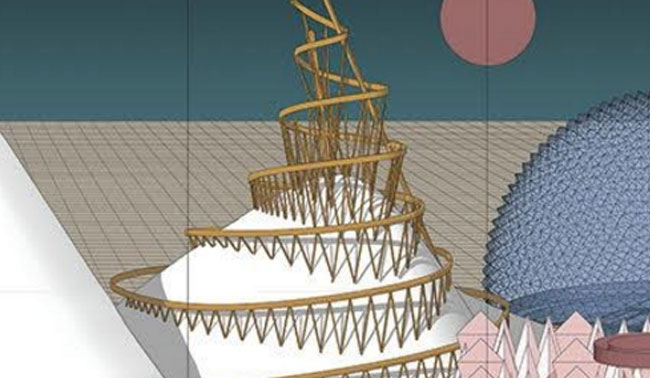BOSTON: A team of engineers and architects at MIT team has won the Mars City Design competition focused on building sustainable cities on the red planet in the future. Massachusetts Institute of Technology (MIT)’s winning urban design, titled Redwood Forest, creates domes or tree habitats that can each house up to 50 people. The domes provide open, public spaces containing plants and abundant water, which would be harvested from the northern plains of Mars.
The tree habitats sit atop a network of underground tunnels, or roots, providing access to private spaces and easy, shirt-sleeve transportation to the other tree habitants in the community of 10,000.
In addition to connectivity, the roots offer residents protection from cosmic radiation, micrometeorite impacts, and extreme thermal variations.
MIT postdoc Valentina Sumini and Assistant Professor Caitlin Mueller led the interdisciplinary team effort, which included nine MIT students from different departments and research groups.
“On Mars, our city will physically and functionally mimic a forest, using local martian resources such as ice and water, regolith (or soil), and sun to support life,” said Sumini.
“Designing a forest also symbolises the potential for outward growth as nature spreads across the martian landscape,” she said. “Each tree habitat incorporates a branching structural system and an inflated membrane enclosure, anchored by tunneling roots.
“The design of a habitat can be generated using a computational form-finding and structural optimisation workflow developed by the team,” said Sumini.
The team aims to build a comfortable environment for inhabitants while using location and system architecture focused on sustainability, a critical component for any Mars community.
George Lordos, who was responsible for the system architecture of Redwood Forest, pointed out the central role of water in building vibrant communities on Mars.
“Every tree habitat in Redwood Forest will collect energy from the Sun and use it to process and transport the water throughout the tree, and every tree is designed as a water-rich environment,” said Lordos.
Many of the features of the design could be also useful on Earth, the designers say. Electric vehicles travelling in underground multi-level networks could help ease congested cities.
— PTI

